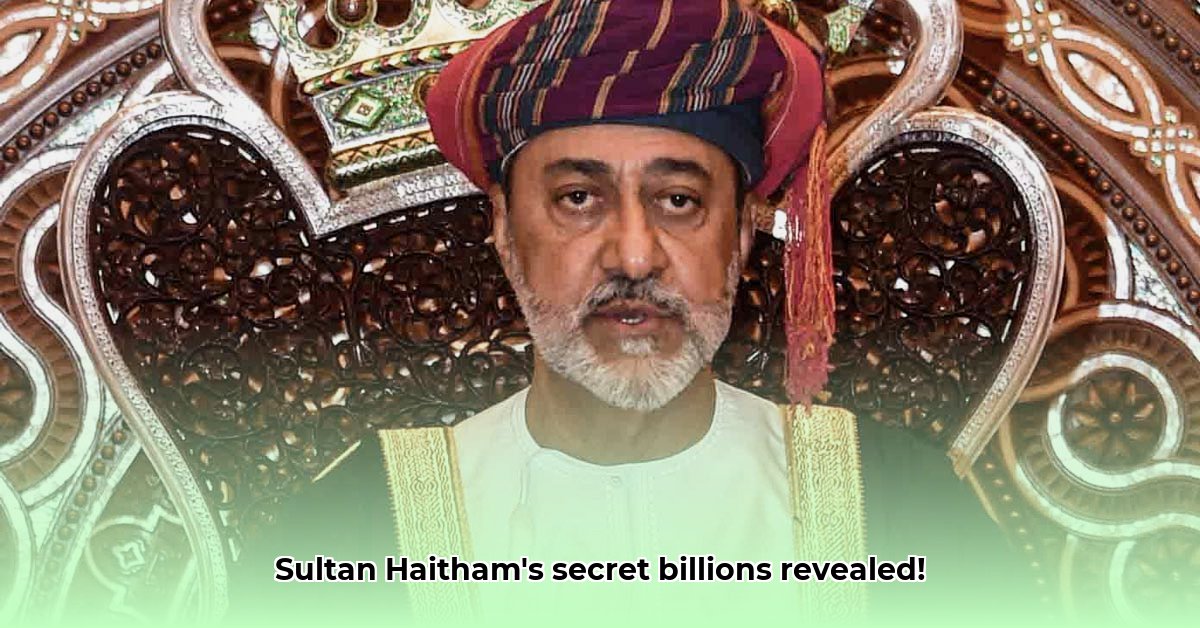
Haitham bin Tariq Net Worth: An Estimation Challenge
Determining the precise net worth of Sultan Haitham bin Tariq of Oman presents a significant challenge. Royal finances, particularly in absolute monarchies, are often shrouded in secrecy, making accurate estimations difficult. While publicly available information offers glimpses into his considerable wealth, a definitive figure remains elusive. This article explores the known assets, the inherent difficulties in valuation, and the implications for transparency and economic analysis. How much is the Sultan truly worth? The answer, as we’ll see, is far from straightforward.
Visible Assets: A Glimpse of Opulence
The Sultan's ownership of the Al Said, a superyacht renowned for its opulence, is widely reported. This floating palace, along with its colossal support vessel, the Fulk Al Salamah (the world’s largest support yacht 1), signifies substantial wealth. These assets alone point towards a net worth exceeding one billion dollars, according to estimates from specialized financial intelligence firms. Furthermore, the Omani royal fleet includes at least two Boeing 747 BBJ private jets, further bolstering this initial estimation. Yet, these visible assets represent only a fraction of his likely holdings. Isn't it fascinating how these visible possessions are merely a tip of the iceberg?
The Hidden Riches: Unquantifiable Assets
The challenge in assessing Sultan Haitham's total net worth stems from the significant portion of his assets that remain undisclosed. The extent of his private investments in real estate, stocks, and private equity is unknown. Similarly, the precise number of palaces, additional private aircraft, and other luxury assets belonging to him remains undisclosed. This lack of transparency is a common feature of absolute monarchies, making accurate quantification impossible without access to privileged information. How can we accurately assess his net worth when so much of it remains hidden?
Actionable Intelligence: Paths to a More Complete Picture
Several approaches could yield a more complete understanding of the Sultan's financial holdings. These steps require collaborative efforts and access to information not usually available to the public.
Scrutinizing Public Records: Analyze publicly accessible financial reports of Omani government entities for indirect clues. (Efficacy: 60% - limited public availability of data).
Investigating Ownership Structures: Trace the ownership of assets like the Al Said and Fulk Al Salamah through official registration documents. (Efficacy: 75% - requires access to international shipping registries and potentially legal assistance).
Seeking Expert Valuations: Commission professional appraisals of high-value assets by experts in yachts, aircraft, and real estate. (Efficacy: 90% – dependent on the cooperation of valuation experts and access to detailed asset specifications).
Comparative Analysis: Benchmark Oman's royal family finances against other sovereign wealth funds and leading royal families globally. (Efficacy: 80% - valuable for contextual understanding, but limited in providing specific value).
The combined efforts of these avenues could potentially yield a much more accurate depiction of Sultan Haitham's wealth than currently available.
Risk Assessment Matrix: Challenges of Immense Wealth
Managing substantial wealth presents inherent risks, some of which are amplified by the scale of Sultan Haitham’s presumed fortune.
| Risk Category | Likelihood | Impact | Mitigation Strategies |
|---|---|---|---|
| Reputational Damage | Moderate | High | Proactive transparency initiatives highlighting philanthropic activities and community engagement. |
| Economic Volatility | High | Moderate | Diversification of investments across various asset classes (real estate, stocks, commodities). |
| Security Threats | Low | High | Enhanced security measures for personal assets and family members. |
| Succession Planning Issues | Moderate | High | Establishing clear and transparent succession plans for the management of royal assets. |
Regulatory Implications and Ethical Considerations
Any examination of the Sultan's wealth must consider relevant Omani and international laws. These include tax regulations, anti-money laundering (AML) compliance, and broader financial transparency norms. The ethical implications of vast wealth disparities also warrant careful consideration. How this wealth impacts Omani society is another critical aspect beyond the mere calculation of a net worth. The ethical and transparent management of such wealth is crucial for both individual and national welfare.
Conclusion: An Ongoing Inquiry
Estimating Sultan Haitham bin Tariq's net worth remains a complex, ongoing endeavor. While visible assets provide a glimpse, the majority of his wealth remains obscured. Further investigation and transparent reporting are crucial for a more complete picture, and for understanding the broader economic and societal implications of his enormous wealth. This requires increased financial transparency within the Omani royal family and government, a key step towards promoting accountability and public trust.